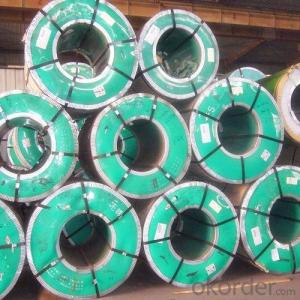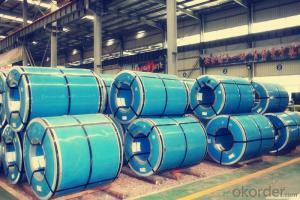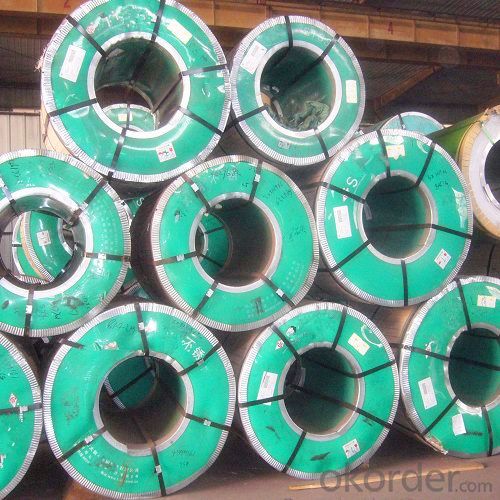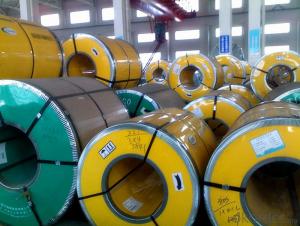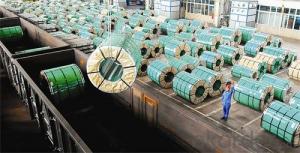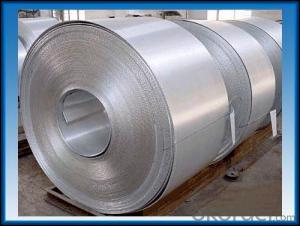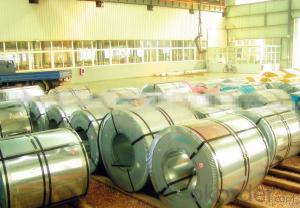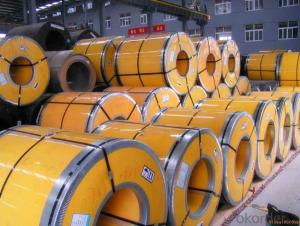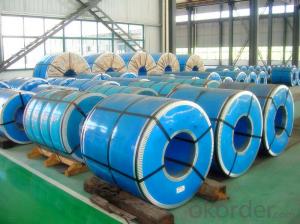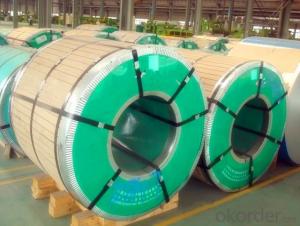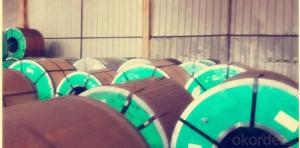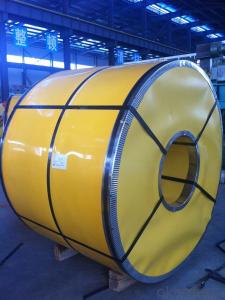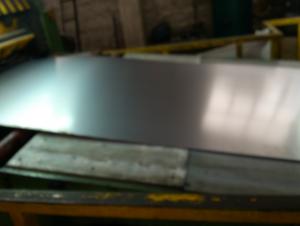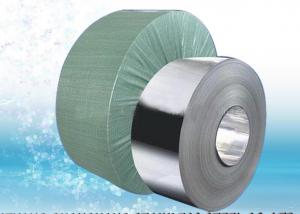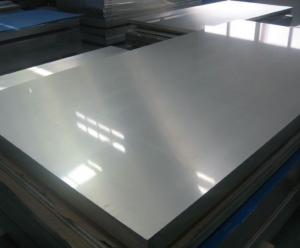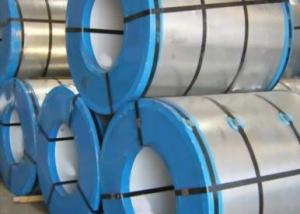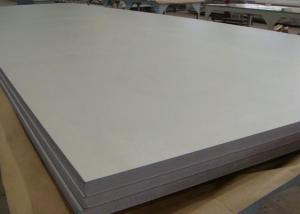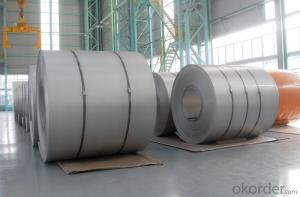Hot Rolled Stainless Steel Coil 304 No.1 Wide Strip
OKorder Service Pledge
OKorder Financial Service
You Might Also Like
Hot Rolled Stainless Steel Coil 304 (Annealing and Pickling) No.1 Finish Wide Strip
1.surface:NO.1
2.standard:JIS, AISI, GB
3.width: 1.0m, 1.22m, 1.5m, 2m or requirement
Hot Rolled Stainless Steel Coil 304 Chemical Composition:
(%):C=0.07, Mn=2.00, P=0.045, S=0.030, Si=0.075, Cr=17.5-19.5, Ni=8.0-10.5, N=0.10
Hot Rolled Stainless Steel Coil 304 Physical Properties
Tensile strength σb (MPa) ≥ 520
the conditions yield strength σ0.2 (MPa) ≥ 205,
elongation δ5 (%) ≥ 40
Reduction of ψ (%) ≥ 50,
hardness: ≤ 187
HB; ≤ 90
HRB; ≤ 200H
Type | Hot Rolled Stainless Steel Coil 304 |
Thickness | 3.0mm-4.0mm |
Width | 1000mm, 1219mm, 1240mm, 1500mm |
Length | according to weight |
Brand name | CNBM |
Standard | ASTM, AISI, DIN, GB, JIS etc |
Material | 304 |
Application | Foodstuff, Gas, metallurgy, biology, electron, chemical, petroleum, boiler, nuclear energy, Medical equipment, fertilizer etc |
Package | Standard export sea-worthy packing |
Delivery time | Within 15 days since getting the deposit or LC origin |
Surface | NO.1 |
Productivity | 20000 tons/month |
Grade: | 300 Series | Standard: | JIS,AISI,ASTM,GB,DIN,EN etc | Thickness: | 2.5mm, 3.0mm, 4.0mm |
Width: | 1000mm, 1219mm, 1240mm, 1500mm | Length: | according to weight | Place of Origin: | China (Mainland) |
Brand Name: | CNBM | Model Number: | 304 | Technique: | Hot Rolled |
Application: | industry, construction, furniture, repairing | Certification: | MTC | Finishing: | NO.1 |
Market: | globle area | Packaged: | wooden and bags in cases as standard | Payment: | TT & LC |
Delivery time: | 15 days | MOQ: | 100 tons | Advantage: | prime quality, competitive price |
Profession: | hot rolled | Charactor: | stainless steel coils | Material/Grade: | 304 |
- Q: Can stainless steel strips be used in solar energy systems?
- Yes, stainless steel strips can be used in solar energy systems. Stainless steel is a durable and corrosion-resistant material, making it suitable for outdoor applications. It can be used in solar panels, mounting frames, and other components of solar energy systems to provide structural support and longevity.
- Q: Can stainless steel strips be used in the aerospace fasteners?
- Yes, stainless steel strips can be used in aerospace fasteners. Stainless steel is a commonly used material in the aerospace industry due to its excellent corrosion resistance, high strength-to-weight ratio, and ability to withstand high temperatures. Stainless steel strips can be formed into various shapes and sizes to create fasteners such as screws, bolts, nuts, and rivets. These fasteners are crucial for joining different components of an aircraft and ensuring structural integrity and safety. Additionally, stainless steel's non-magnetic properties make it suitable for applications where magnetic interference is a concern, such as in avionics and electronic systems. Overall, stainless steel strips are a reliable and widely used material for aerospace fasteners.
- Q: Can stainless steel strips be heat treated?
- Yes, stainless steel strips can be heat treated. Heat treatment of stainless steel strips can help improve their mechanical properties, such as hardness and strength, as well as enhance their corrosion resistance. The specific heat treatment process and parameters may vary depending on the grade of stainless steel and the desired properties.
- Q: Can stainless steel strips be customized?
- Yes, stainless steel strips can be customized. Stainless steel is a versatile material that can be easily cut, shaped, and formed according to specific requirements. Customization options include cutting the strips into specific dimensions, shaping them into curves or angles, and adding additional features such as holes, notches, or slots. Stainless steel strips can also be customized in terms of surface finishes, including brushed, polished, or embossed finishes. Additionally, various grades of stainless steel are available, each with different properties and characteristics, allowing for further customization to meet specific needs such as corrosion resistance, strength, or heat resistance. Overall, stainless steel strips offer a wide range of customization possibilities to suit different applications and industries.
- Q: Are stainless steel strips resistant to hydrochloric acid?
- Yes, stainless steel strips are generally resistant to hydrochloric acid. This is because stainless steel is known for its corrosion resistance and ability to withstand chemical attack. However, the level of resistance can vary depending on the grade of stainless steel used. Higher grades of stainless steel, such as 316 or 317, have a higher resistance to hydrochloric acid compared to lower grades like 304 or 430. It is important to note that prolonged exposure or contact with concentrated hydrochloric acid can still cause some corrosion or pitting in stainless steel, but it is generally considered to be one of the most resistant metals to this acid.
- Q: What are the mechanical properties of 111 stainless steel strips?
- The mechanical properties of 111 stainless steel strips may differ based on factors like the manufacturing process and specific alloy composition. However, in general, stainless steel strips designated as 111 exhibit several crucial mechanical properties. 1. Tensile Strength: Typically, 111 stainless steel strips possess a high tensile strength, indicating their ability to withstand maximum tensile stress before failure. This quality makes them suitable for applications that require strength and resistance to deformation. 2. Yield Strength: The yield strength of 111 stainless steel strips signifies the stress at which the material permanently deforms. It is a critical property for determining the material's resistance to deformation under load. 3. Hardness: Often, stainless steel strips labeled as 111 have a high level of hardness, which measures their resistance to scratching, indentation, or penetration. This characteristic contributes to their durability and wear resistance. 4. Ductility: Ductility refers to a material's capacity to deform under tensile stress without breaking or fracturing. Although stainless steel generally possesses lower ductility compared to other metals, the specific ductility of 111 stainless steel strips can vary based on factors like alloy composition and processing method. 5. Corrosion Resistance: Stainless steel, including 111 stainless steel strips, is renowned for its exceptional resistance to corrosion. This property arises from the presence of chromium in the alloy, which forms a protective oxide layer that safeguards the material against rust and corrosion in diverse environments. It is important to recognize that these mechanical properties can slightly vary depending on the specific alloy composition, heat treatment, and manufacturing process employed in the production of 111 stainless steel strips. Therefore, referring to the manufacturer's specifications or conducting tests on the material is advisable to obtain precise mechanical property data for a particular application.
- Q: What is the creep resistance of stainless steel strips?
- The ability of stainless steel strips to withstand deformation or elongation under sustained high temperatures and constant stress is referred to as their creep resistance. Compared to other materials, stainless steel is well-known for its excellent creep resistance. This is primarily attributed to its high chromium content, which leads to the formation of a protective oxide layer on the steel's surface, thereby enhancing its resistance to oxidation and creep deformation. Furthermore, stainless steel strips often contain additional alloying elements like nickel, molybdenum, or titanium, which further contribute to their creep resistance. These alloying elements serve to strengthen the steel and improve its capacity to resist deformation at elevated temperatures. Consequently, stainless steel strips are a dependable choice for applications where creep resistance is crucial, such as in high-temperature environments or under constant stress.
- Q: The difference between stainless steel and cold rolled steel strip
- Stainless steel: the surface appearance and the possibility of the use of various good corrosion resistance than ordinary steel, durable good corrosion resistance and high strength, so the possibility of using large sheet of high temperature oxidation resistant and high strength, it can fire resistant temperature processing, plastic processing is easy because without surface treatment, so simple, maintenance is simple and clean, bright and clean a high degree of good welding performance.
- Q: Can stainless steel strips be used in the automotive parts industry?
- Absolutely, the automotive parts industry can definitely make use of stainless steel strips. Stainless steel is an incredibly versatile and durable material that offers a wide array of benefits for automotive applications. Its corrosion-resistant nature is of utmost importance in an industry where exposure to varying weather conditions and road salts can lead to rust and deterioration. Furthermore, stainless steel strips possess exceptional strength and impact resistance, making them ideal for structural elements such as chassis and body panels. Moreover, stainless steel strips can be easily shaped, welded, and machined, allowing for customization and seamless integration into diverse automotive parts and assemblies. Thanks to these advantageous characteristics, stainless steel strips are frequently employed in the production of exhaust systems, trim, brackets, fasteners, and various other automotive components.
- Q: Can stainless steel strips be used for decorative screens?
- Yes, stainless steel strips can be used for decorative screens. Stainless steel is a versatile material that offers both durability and aesthetic appeal, making it a popular choice for various applications, including decorative screens. The strips can be cut and shaped into different patterns or designs, allowing for creative and customized screen options. Additionally, stainless steel is resistant to corrosion and can withstand outdoor elements, making it suitable for both indoor and outdoor decorative screens. Whether it's for privacy, partitioning, or enhancing the visual appeal of a space, stainless steel strips can be an excellent choice for creating decorative screens.
Send your message to us
Hot Rolled Stainless Steel Coil 304 No.1 Wide Strip
OKorder Service Pledge
OKorder Financial Service
Similar products
Hot products
Hot Searches
Related keywords
